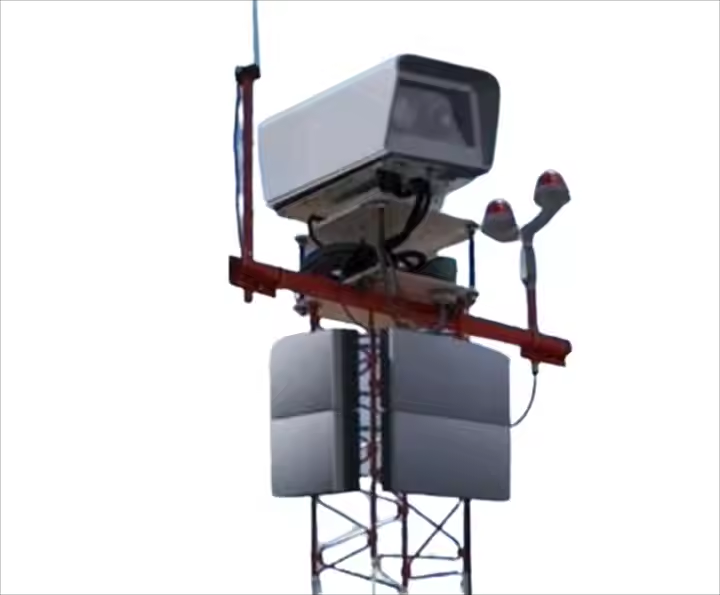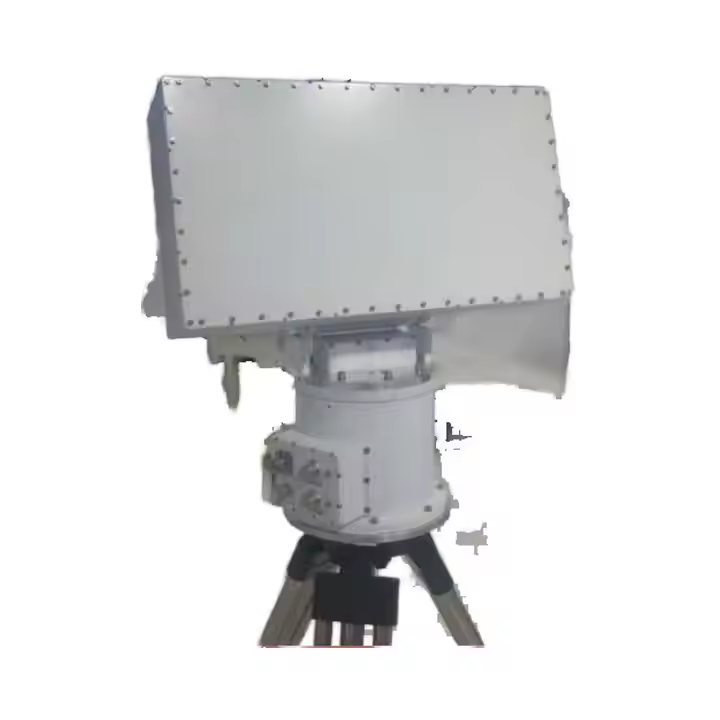Grunnleggende om millimeterbølgekommunikasjonsutbredelse
Millimeterbølgje (mmWave)-kommunikasjon i båndene 30–300 GHz er en nøkkelteknologi for datahurtige 5G-systemer. Bruken av bredbånds- (~1 GHz) kanaler gjør at disse løsningene kan levere flere gigabit per sekund for å møte stadig økende krav fra lavforsinkelsesapplikasjoner som for eksempel augmented reality og autonome kjøretøy. En rapport fra Nature i 2023 viste mmWave med en hastighet på 10 Gbps over 1 km ved bruk av rettet antenne, selv om utbredelsesegenskapene skiller seg mye fra mikrobølger ved lavere frekvenser.
Fri romtapetapning er proporsjonal med frekvenskvadratet i fritt rom, noe som fører til 20–30 dB høyere tapssk tap sammenlignet med sub-6 GHz-båndene. Utendørs miljøproblemer forverrer disse problemene – nedbør kan føre til en demping på 5–15 dB/km ved 60 GHz, mens byggematerialer som betong fører til 40–60 dB tap ved gjennopptrengning. Vegetasjon fører normalt til et signaltap på 10–20 dB, og innovative ingeniørløsninger kreves for å oppnå samme pålitelighet som i et klart område.
Avanserte beamforming-praksiser med faseringsantenneoverkommer forplantningsbegrensninger ved å etablere rettede transmisjonskanaler. Disse rettede strålene tillater at frekvensen gjenbrukes i rommet og interferens reduseres – en viktig fordel i overfylte byområder. De nyeste arkitekturene utnytter hybridstrukturer av den ortogonale multicarrier-modulasjonen (OMM) og massive MIMO, og oppnår intelligente nettverk som utnytter frekvensroyaliteten til mmWave-båndene og robustheten i mikrobølgesystemer for å få maksimal gjennomstrømning på flyt.
Miljøpåvirkning på mmWave-kommunikasjonssignaler
Millimetrebølge (mmWave)-kommunikasjonssystemer møter unike miljømessige utfordringer som dramatisk påvirker signallitet i ulike driftsscenarier.
Værinduserte signaldempningsmekanismer
Regn medfører opptil 20 dB/km demping ved 60 GHz frekvenser, mens snø og tåke forårsaker ytterligere spredningseffekter som forstyrrer fasekohærens. Disse værfenomener påvirker mmWave-linker mer enn lavfrekvente systemer på grunn av kortbølgets følsomhet for partikkelinterferens.
Vegetasjon og bygningspenetrasjonstap
Feltmålinger viser at ett enkelt tre kan dempe mmWave-signaler med 35 dB, mens tett løvverk blokkerer 98 % av signalkraften. Byggematerialer som farvet glass viser 40 dB transmisjonstap ved 28 GHz – tre ganger høyere enn mikrobølgefrekevenser – og krever strategisk nettverksplanlegging for å overkomme strukturelle hindringer.
Regndemping og atmosfærisk absorpsjonsutfordringer
Oksygenabsorpsjonstopper ved 60 GHz skaper 15 dB/km atmosfærisk tap, med tropisk regnsignalforringelse som overstiger 30 dB/km i alvorlige forhold. Disse effektene kombineres og reduserer praktiske rekkevidder, noe som nødvendiggjør adaptive fade-marginberegninger og dynamiske strømjusteringsprotokoller.
Tapspredningsmodellering i millimeterbølgekommunikasjon
Fritt rom vs. byutbredelsesmodeller
Utbredelse av millimeterbølger (mmWave) har unike egenskaper avhengig av miljøet. Tap i fri rom (FSPL) kan uttrykkes som invers kvadrat av transmisjonsdistanse, \(\frac{1}{R^2}\). I byområder fører imidlertid kanalen til mer komplekse interaksjoner hvor tapsexponentene ligger i området 2,5–4,5 (LOS) og 4,7–9,2 (non-LOS). Bladtap ved 28 GHz er 6–8 dB/m, og betongvegger fører til 40–60 dB tap. Bymessig mmWave-rekkevidde uten beamforming reduseres til 150–200 meter på grunn av disse hindringene, sammenlignet med den teoretiske rekkevidden i fri rom på 1–2 km. Adaptivt antenneanordninger kan delvis gjenopprette dette tapet ved å styre effekten mot veier der et brukbart signal eksisterer, men praktisk rekkevidde bestemmes i slutten av dagen av tettheten av hindringer.
Frekvensavhengige dempingsegenskaper
Atmosfærisk absorpsjon toppene på 24 GHz (på grunn av vanndamp) og på 60 GHz (på grunn av oksygen) medfører en tilleggsforløp på 0,2–15 dB/km til mmWave-systemer. Regnsignaler gir en dempningsgrad på 2–8 dB/km mellom 30–40 GHz i moderat regn. Det er verdt å merke seg at 73 GHz-signaler lider av 1,8× større frittromstap sammenlignet med 24 GHz ved samme avstander, som skyldes \(f^2\)-avhengigheten i FSPL-ligninger. Dette fører til en avgjørende avveining – selv om høyere frekvenser tillater bredere båndbredde (2 GHz-kanaler), krever de også basestasjonsplasseringer som er 4 ganger tettere enn i under 100 GHz-området. Disse begrensningene er i dag mildret av avanserte materialer, slik som lavtapsdielektrikker og metasoverflateantenner, som tillater 90\% effektive bånd i 5G-backhaul-koblinger ved E-båndfrekvenser.
Linje-till-sikt-krav for pålitelig kommunikasjon
Millimeterbølgje (mmW) kommunikasjonssystemer krever perfekt justering mellom sender og mottaker på grunn av deres høyfrekvente drift (24–100 GHz). Mens lavfrekvente signaler kan bøyes rundt hindringer, blir opptil 60–90 % av energien fra mm-bølger absorbert av hindringer (ITU 2023). En slik begrensning gjør at uhindret direkte synsforbindelse (LOS) er en viktig forutsetning for å oppnå multigigabit-throughput i 5G/6G-scenarier.
Forstyrrelser forårsaket av menneskelig aktivitet og strukturer
Bymiljøer innfører tre primære LOS-forstyrrelser:
- Statiske hindringer : Betongvegger reduserer mm-bølgesignaler med 40–60 dB, mens glass svekker overføringen med 15–25 dB
- Mobile hindringer : En enkelt fotgjenger kan føre til et signaltap på 20–35 dB, og biltrafikk skaper periodiske avbrudd som varer 0,8–3,2 sekunder
- Miljømessige dynamikkendringer : Sesongmessige vegetasjonsendringer endrer bladverdienes dempning med 12–18 dB
Disse effektene øker i tette byer, hvor tilgjengeligheten av LOS (Line-of-Sight) faller til 54–72 % uten inngrep med beamforming.

Beamforming-løsninger for scenarier uten direkte siktelinje (NLOS)
Fasestyrte antenner muliggjør 27 dBm ekvivalent isotropisk utstrålt effekt (EIRP) for å styre stråler og omgå hindringer. Moderne systemer oppnår:
- antennekluster med 1024 elementer for en nøyaktighet på 1,2° i strålebredden
- Omjustering av stråler på under 3 ms ved bruk av AI-drevet RF-baneprediksjon
- 78 % NLOS (Non-Line-of-Sight)-pålitelighet gjennom refleksjoner i vegger
En studie fra 2024 om kommunikasjonsinfrastruktur for UAV-er (Unmanned Aerial Vehicles) demonstrerte hvordan adaptiv beamforming reduserer sannsynligheten for nedetid i byområder med 63 % sammenlignet med faste sektornetter. Denne metoden kombinerer sanntids-lidar-mapping med dynamisk spektrumdeling for å opprettholde QoS under forstyrrelser.
Kanalmodeletteringsmetoder for mmWave-kommunikasjon
tredimensjonale mekanismer for signalforplantning
Høyt oppløste 3D-moder er nødvendige for millimeterbølge (mmWave)-kommunikasjonssystemer for å forstå signalkobling med bymessige elementer i både elevasjons- og azimutplan. I motsetning til klassiske 2D-modeller, bruker de statistiske modelleringsmetoder for å etterligne LOS-sannsynlighet, inkludert bygningsstørrelser og tidsvarierende hindringer med f.eks. det utvidete Saleh-Valenzuela-modellen. Vi viser at disse modellene predikerer en diffraksjonstap variasjon på 12–18 dB for ulike strukturgeometrier.
Multipath fading og refleksjonsanalyse
MmWave’s korte bølgelengder skaper sparsomme multipath-kluster, hvor refleksjoner lider 6–9 dB demping sammenlignet med sub-6 GHz-signaler. Studier innendørs demonstrerer at bare 20–30 % av den spredte energien bidrar til levedyktige multipath-forbindelser, noe som krever reviderte statistiske modeller som prioriterer dominerende refleksjonsveier fremfor diffus spredning.
Industripardoks: Høy båndbredde vs. Begrenset rekkevidde-kompromisser
Selv om mmWave-båndene tilbyr kanalbåndbredder på 400–800 MHz, er den frie veitapet i signalstyrke ved 28 GHz 29 dB høyere enn ved 3 GHz. Dette tvinger nettverk til å utplassere små celler i intervaller på 150–200 meter i bykjerner – 4 ganger tettere enn mikrobølgebånd-systemer – for å opprettholde gigabit-overføringshastighet.
Studie av urban implementering i praksis
En test i Madrids tunnelbane med frekvenser på 26 GHz oppnådde 94 % pålitelighet i travle stasjoner ved å kombinere strålestyring (beamforming) med sanntidsdeteksjon av forstyrrelser. Likevel førte fotgjengernes bevegelse til RSS-utslag på 3–5 dB, noe som understreker behovet for AI-drevet kanaltilpasning i offentlige miljøer.
Strategisk Base stasjon Planlegging av kommunikasjonsnettverk
Plassering av installasjoner for å redusere signalsforstyrrelser
Ved optimal plassering av basestasjonene minimeres interferensnivået i mm-bølgenettverk der signalene svekkes veldig raskt på grunn av hindringer. Utbygging i bymiljø krever optimal plassering for å løse problemene med miljøbetinget signalblokkering og signalduplisering. Med kompleks propagasjonsmodellering kan systemplanleggere identifisere områder som minimerer tverskanalinterferens og maksimerer dekningsdensiteten. Vi finner at terrengbasert valg av plasseringssteder kan redusere antall døde soner med 45 % og den gjennomsnittlige diameteren med 24 % sammenlignet med jevn fordeling. Nøkkelfaktorer er bygningsdensitet og høydeforskjeller, samt kartlegging av eksisterende infrastrukturtrapping for å tillate interferensundertrykkelse uten ytterligere maskinvareinvesteringer.
Fremtidens trender: Hybrid RF-MmWave-arkitektur
Dual-band-arkitekturer som integrerer mmWave-teknologi med sub-6 GHz-bånd viser seg å være gjennomførbare kandidater for fremtidige nettverk. Denne hybridarkitekturen kombinerer mmWave massive MIMO for høy kapasitet i tettbygde bykjerner med RF-frekvenser for bredere dekning i forsteder og landlige områder. Smarte bryteprotokoller tilordner brukere over båndene dynamisk basert på mobilitet og tjenesteprofiler. Systemet reduserer installasjonstettheten med 60 % sammenlignet med et nettverk som kun benytter mmWave, og sikrer samtidig nødvendig QoS under overføring. Denne kombinerte løsningen viser seg også å være lovende for industrielle IoT-applikasjoner der kontinuerlig tilkobling over ulike terrengformer er avgjørende.
Ofte stilte spørsmål
Hva er millimeterbølgekommunikasjon?
Millimeterbølgekommunikasjon refererer til trådløs transmisjonsteknologi som benytter frekvensbånd mellom 30 og 300 GHz. Den brukes hovedsakelig for høyhastighetsdataapplikasjoner som 5G-systemer.
Hvordan påvirker været mmWave-signaler?
Værforhold som regn, snø og tåke kan betydelig svekke mmWave-signaler på grunn av de korte bølgelengdene som er følsomme for partikkelinterferens.
Hva er utfordringene med utbredelse av mmWave-signaler?
Utfordringer inkluderer høyt frittromstap, miljøsvekkelse fra regn, løvverk og byggematerialer, samt at det kreves direkte linjesikt for effektiv kommunikasjon.
Hvordan hjelper beamforming mmWave-kommunikasjon?
Beamforming-teknikker bruker fasejusterbare antenner for å rette signalløpene, minimerer interferens og reduserer miljøpåvirkning, og forbedrer kommunikasjon i tettbygde områder.
Innholdsfortegnelse
- Grunnleggende om millimeterbølgekommunikasjonsutbredelse
- Miljøpåvirkning på mmWave-kommunikasjonssignaler
- Tapspredningsmodellering i millimeterbølgekommunikasjon
- Linje-till-sikt-krav for pålitelig kommunikasjon
- Kanalmodeletteringsmetoder for mmWave-kommunikasjon
- Strategisk Base stasjon Planlegging av kommunikasjonsnettverk
- Ofte stilte spørsmål

